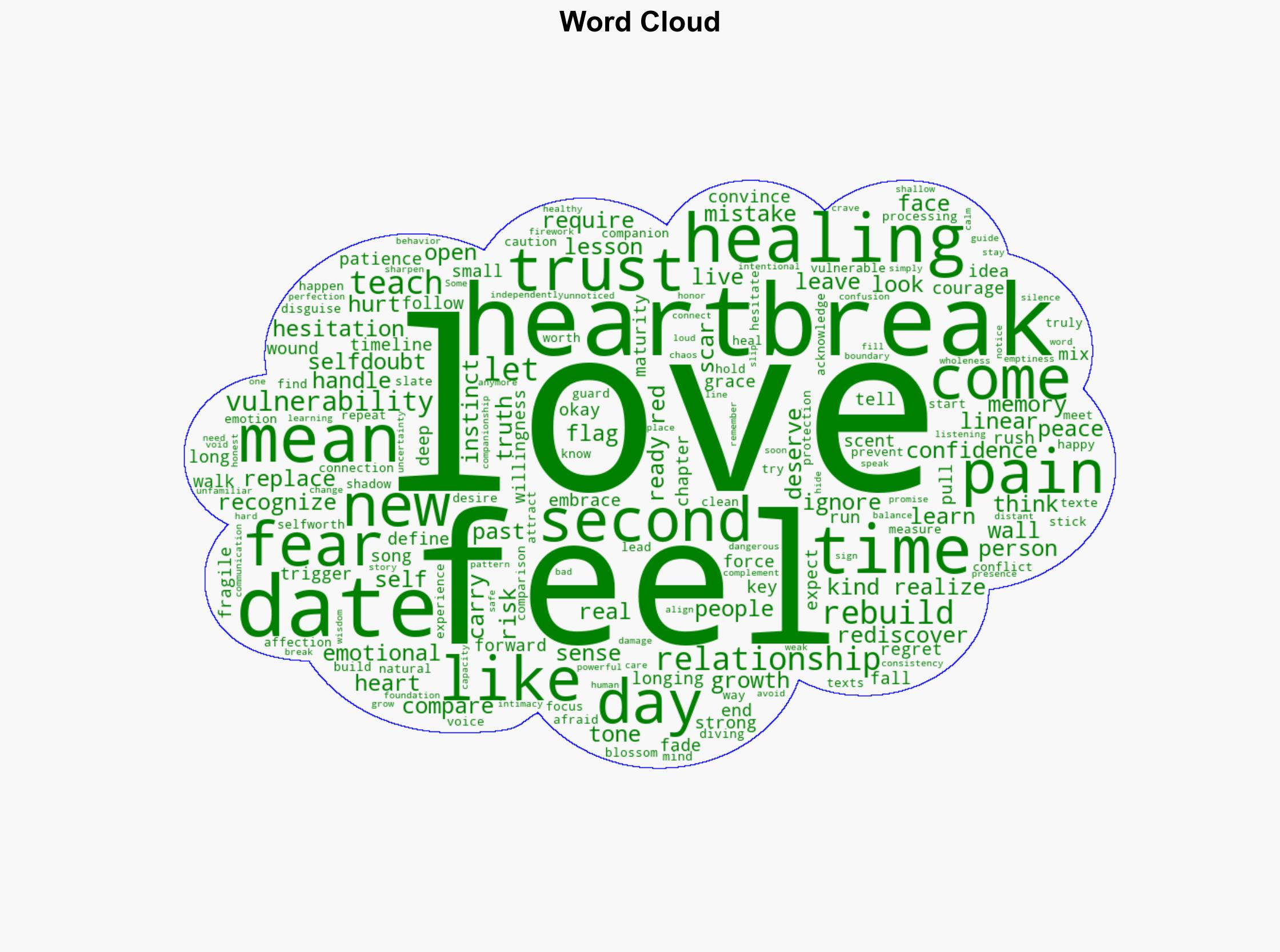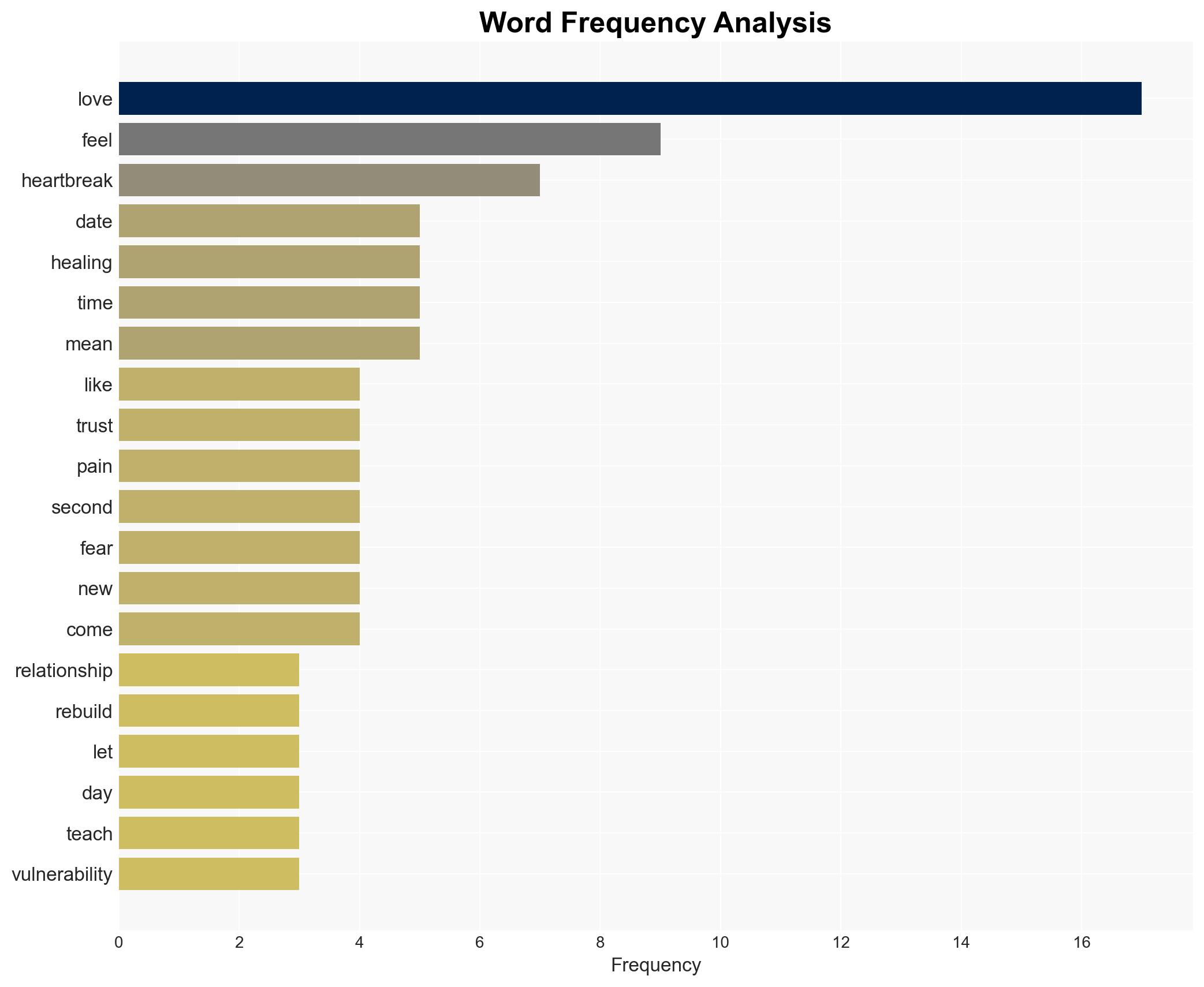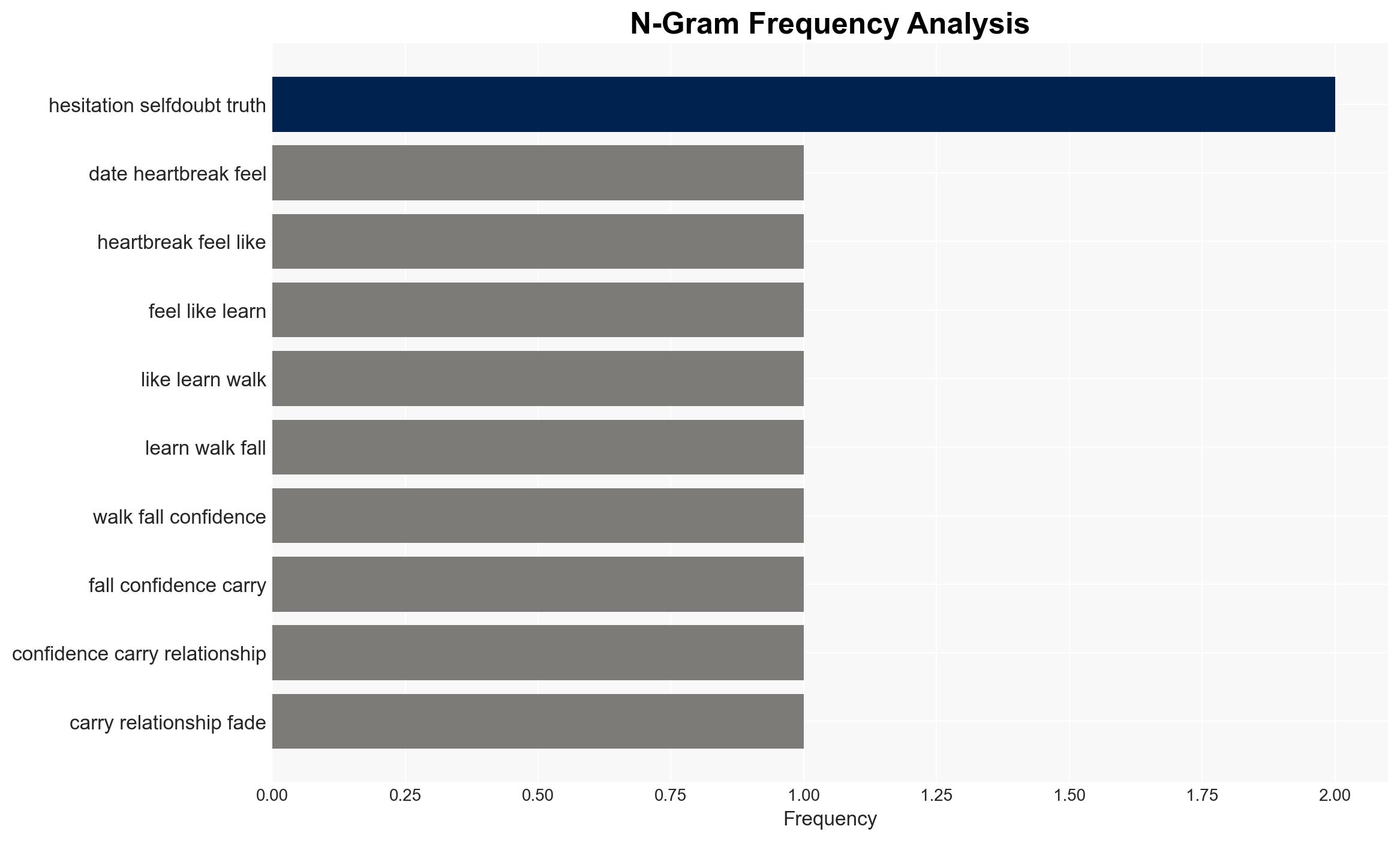7 hard truths about dating after heartbreak – Rolling Out
Published on: 2025-11-16
AI-powered OSINT brief from verified open sources. Automated NLP signal extraction with human verification. See our Methodology and Why WorldWideWatchers.
Intelligence Report: Strategic Analysis of Post-Heartbreak Dating Dynamics
1. BLUF (Bottom Line Up Front)
The most supported hypothesis is that individuals who experience heartbreak face significant emotional challenges that influence their readiness to re-enter the dating scene. This process requires emotional maturity and self-awareness to avoid repeating past mistakes. Confidence Level: Moderate. Recommended action is to promote awareness and resources for emotional healing and self-discovery before pursuing new relationships.
2. Competing Hypotheses
Hypothesis 1: Post-heartbreak individuals are likely to repeat past relationship mistakes due to unresolved emotional issues and a lack of self-awareness.
Hypothesis 2: Post-heartbreak individuals can successfully navigate new relationships by leveraging lessons learned from past experiences, leading to healthier relationship dynamics.
Hypothesis 1 is more likely due to the common psychological patterns observed in individuals who have not fully processed their previous relationship experiences. Emotional triggers and unresolved issues often lead to similar relationship dynamics as before.
3. Key Assumptions and Red Flags
Assumptions include the belief that emotional healing is a linear process and that individuals have the necessary support systems to aid in their recovery. Red flags include the potential for individuals to rush into new relationships as a means of filling emotional voids, leading to dependency rather than healthy interdependence.
4. Implications and Strategic Risks
The primary risk is the perpetuation of unhealthy relationship patterns, which can lead to emotional distress and decreased overall well-being. This can have broader societal implications, including increased mental health issues and reduced productivity. Additionally, there is a risk of misinformation about healthy relationship dynamics spreading through social and informational channels.
5. Recommendations and Outlook
- Develop and promote educational programs focused on emotional intelligence and self-awareness post-breakup.
- Encourage the use of mental health resources to support individuals in their healing journey.
- Best-case scenario: Individuals achieve personal growth and enter healthier relationships.
- Worst-case scenario: Persistent unhealthy relationship patterns lead to widespread emotional distress.
- Most-likely scenario: A mixed outcome where some individuals successfully navigate post-breakup challenges while others struggle.
6. Key Individuals and Entities
No specific individuals are mentioned in the source text. The focus is on the general population experiencing post-heartbreak challenges.
7. Thematic Tags
Cybersecurity, Emotional Intelligence, Relationship Dynamics, Mental Health, Personal Growth
Structured Analytic Techniques Applied
- Adversarial Threat Simulation: Model and simulate actions of cyber adversaries to anticipate vulnerabilities and improve resilience.
- Indicators Development: Detect and monitor behavioral or technical anomalies across systems for early threat detection.
- Bayesian Scenario Modeling: Quantify uncertainty and predict cyberattack pathways using probabilistic inference.
Explore more:
Cybersecurity Briefs ·
Daily Summary ·
Support us
·





